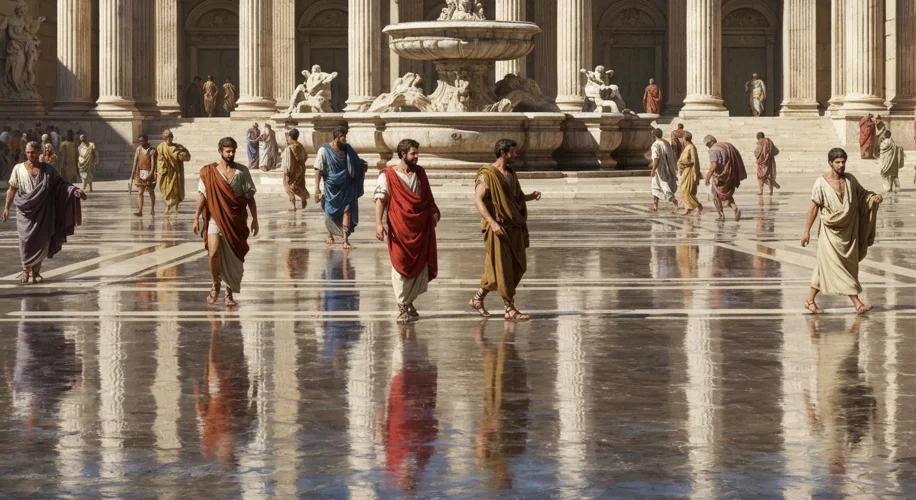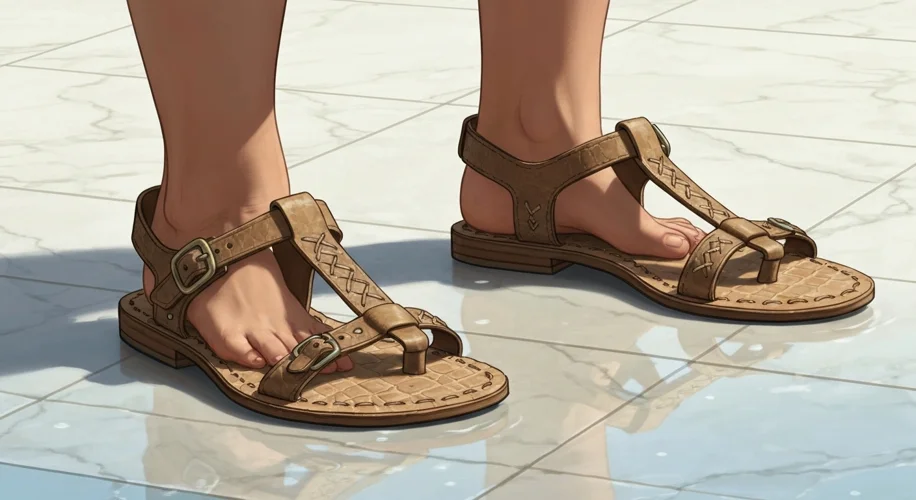Imagine walking through a bustling Roman forum, the air thick with the scent of olive oil and sweat. Sunlight glints off the polished marble underfoot. Suddenly, a splash from a nearby fountain, or perhaps a morning dew, transforms that gleaming surface into a treacherous, slick trap. For the ancient Greeks and Romans, who built much of their world with this beautiful, but often slippery, stone, this was not just a minor inconvenience; it was a daily reality.
The civilizations of Greece and Rome are renowned for their monumental architecture and sophisticated engineering. Their temples, baths, theaters, and public spaces were often adorned with marble, a material prized for its durability, aesthetic appeal, and ability to be sculpted into intricate forms. From the Parthenon in Athens to the Pantheon in Rome, marble was the canvas upon which their artistic and architectural genius was displayed.
But this ubiquitous use of marble, especially in areas exposed to water, presented a significant practical challenge: wet marble is notoriously slippery. Consider the daily lives of these ancient peoples. They enjoyed public baths, courtyards with fountains, colonnades that could collect rainwater, and even early forms of sanitation. All these environments would frequently have wet marble surfaces. The potential for serious injury – a sprained ankle, a broken bone, or worse – was ever-present.

How did they cope with this pervasive hazard? While direct accounts of ancient slip-and-fall prevention strategies are scarce, we can infer their ingenuity through their architectural choices and material knowledge.
One primary solution would have been the texture of the marble itself. While we often imagine pristine, mirror-smooth surfaces, many ancient marble floors, particularly in areas prone to wetness, were likely intentionally textured. Techniques such as bush-hammering or using a coarser finish during polishing could have created a rougher surface, providing greater friction. Think of the non-slip treads you see on modern bathroom tiles; the principle is the same.
Another approach involved strategic placement and design. Marble was likely reserved for areas where its beauty could be best appreciated and where the risk of excessive wetness could be managed. In areas like bathhouses, where water was abundant, alternative materials might have been used for flooring, or wooden duckboards could have provided a safer walking surface. Roman engineers were masters of hydraulics, and their designs for aqueducts, baths, and drainage systems suggest a deep understanding of water management, which would have also extended to keeping public spaces as dry as possible.
Consider the footwear of the time. Sandals, the common footwear of both Greeks and Romans, offered some grip, but their soles were often made of leather, which can also become slick when wet. However, the flexible nature of sandals might have allowed the wearer to feel the surface more acutely, providing a subconscious awareness of the slipperiness.
Furthermore, we must acknowledge the cultural adaptation to these conditions. Just as we learn to walk carefully on icy sidewalks, ancient peoples likely developed an innate sense of caution when traversing potentially wet marble. This ingrained awareness, passed down through generations, would have been a crucial, albeit invisible, layer of safety.
One can imagine the lively discussions in the Senate or the marketplace. A senator might have slipped on the marble steps of the Curia, leading to a wry comment about the durability of the stone versus the frailty of the human body. These everyday occurrences, while potentially dangerous, would have become normalized, addressed through subtle adjustments in gait and awareness.
The engineering prowess of the Greco-Romans was not just about building grand structures; it was also about making those structures functional and safe for daily use. The challenge of wet marble, though seemingly minor to us today, was a constant consideration for those who walked upon it daily. Their solutions, often subtle and integrated into the very fabric of their architecture, speak volumes about their practical ingenuity and their deep understanding of the materials they employed. They didn’t just build with marble; they learned to live with it, in all its slick, beautiful glory.

